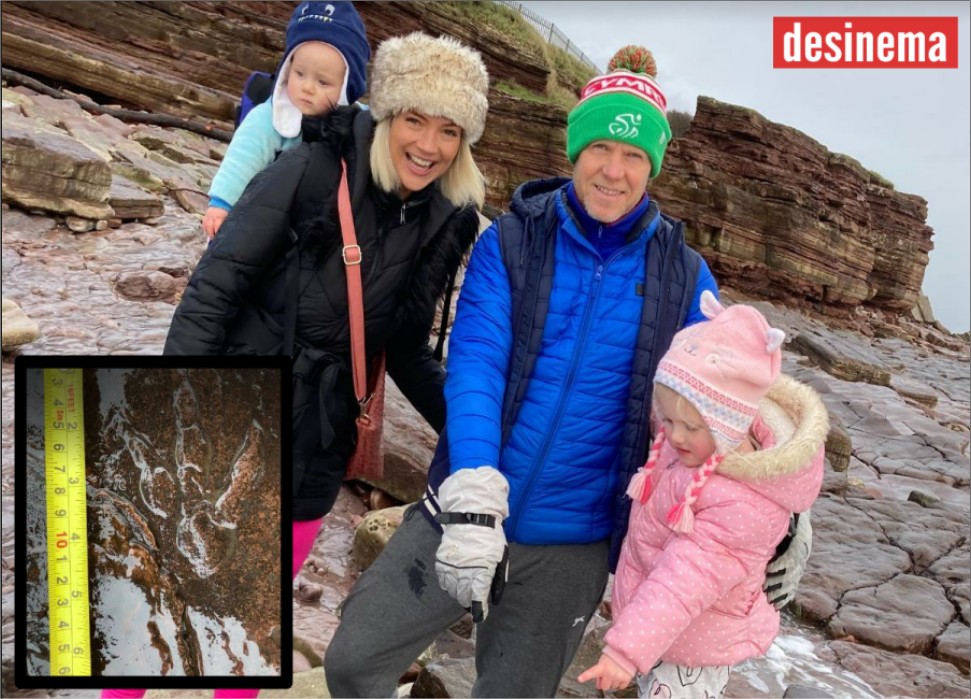The discovery has been hailed as one of the “best examples” of a dinosaur footprint ever found in the UK.
A four-year-old girl has stunned paleontologists after finding an “internationally important” dinosaur footprint on a trip to the supermarket
Lily Wilder was walking along the coast between Barry and Sully with her father Richard when she spotted what experts from Archaeology Cymru are calling “the finest impression of a 215 million-year-old dinosaur print found in Britain in a decade”.
The perfect print, which her family initially thought may have been created by an artist, was left by a small bipedal dinosaur. Experts call this type of print a Grallator, although it is impossible to identify the type of dinosaur that left it.
The print itself is just over 10cm long and is likely to have been made by a dinosaur that stood about 75cm tall and 2.5m long. It would have been a slender animal which walked on its two hind feet and actively hunted other small animals and insects.
“We weren’t even sure it was real. I was imagining an artist had gone down and scratched it out, but I knew dinosaur footprints had been found along that piece of coast before so I just thought I’d ask some people,” said Lily’s mother, Sally Wilder.
“I found this fossil identification page on Facebook and I posted it on there and people went a bit crazy.
Cindy Howells, the palaeontology curator at the National Museum of Wales, said: “This fossilised dinosaur footprint from 220 million years ago is one of the best-preserved examples from anywhere in the UK and will really aid palaeontologists to get a better idea about how these early dinosaurs walked.
“Its acquisition by the museum is mainly thanks to Lily and her family who first spotted it.
“During the COVID pandemic, scientists from Amgueddfa Cymru have been highlighting the importance of nature on people’s doorstep and this is a perfect example of this.
Obviously, we don’t all have dinosaur footprints on our doorstep but there is a wealth of nature local to you if you take the time to really look close enough.”
Special permission had to be sought to remove the footprint from the beach, as it is a site of Special Scientific Interest and owned privately.



